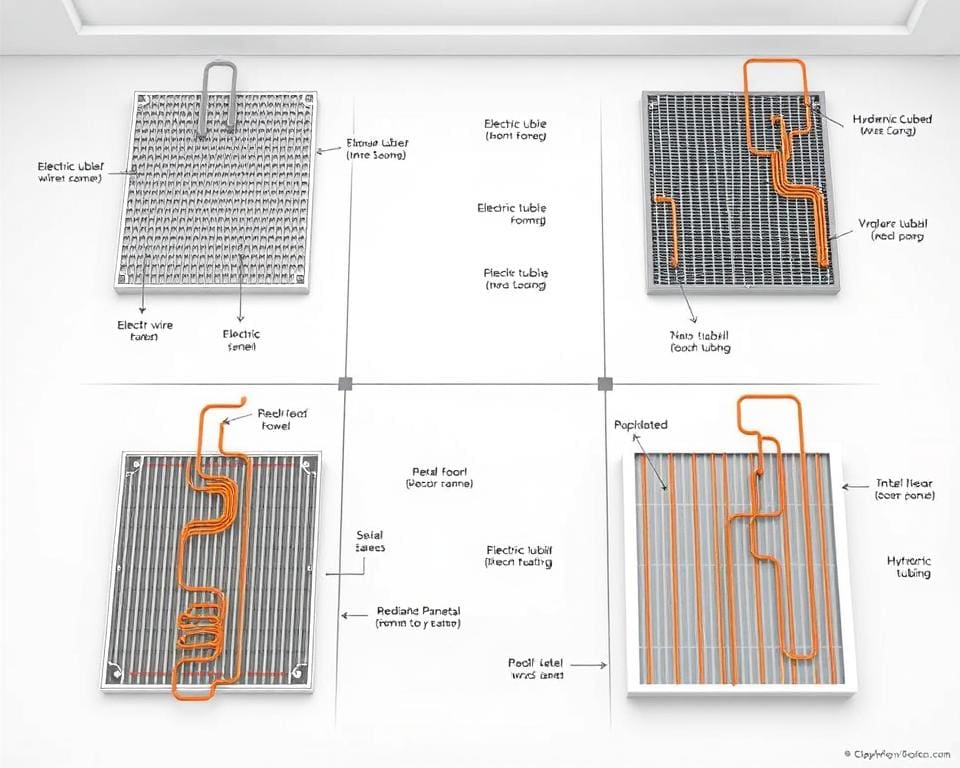As homeowners seek sustainable and comfortable living, the option of underfloor heating in older homes, particularly traditional Scottish cottages, is gaining attention. This innovative heating method can enhance the ambience of historical structures while potentially reducing energy costs. With a focus on the benefits of underfloor heating, we will explore its practicality and efficiency, addressing common queries regarding its suitability for older properties. Join us as we delve into whether this modern solution is the right choice for your cherished home.
Understanding Underfloor Heating Systems
Underfloor heating provides a modern solution to heating that can transform both comfort and aesthetics in a home. With various options available, it is essential to understand the types of underfloor heating systems and their functions. This knowledge empowers homeowners to make informed decisions about installing this innovative heating method, especially in older properties.
Types of Underfloor Heating
Underfloor heating primarily consists of two types: electric underfloor heating and water-based underfloor heating. Electric underfloor heating generally involves the installation of heating mats or cables beneath the floor surface. This method is often favoured for its ease of installation and lower initial cost. In contrast, water-based underfloor heating, commonly known as hydronic heating, circulates warm water through pipes. This system can be more cost-effective over time, particularly when covering larger areas or whole homes.
How Underfloor Heating Works
The mechanics of underfloor heating are quite straightforward once understood. In electric underfloor heating, heated mats generate warmth that radiates evenly across the floor, distributing heat upwards into the room. Water-based underfloor heating operates by circulating heated water through pipes installed in the flooring. As the warm water flows, it transfers heat into the floor surface, creating a consistent and comfortable ambient temperature. Understanding how underfloor heating works paves the way for appreciating its efficiency and effectiveness, making it a compelling choice for any home renovation.

Benefits of Underfloor Heating in Older Homes
Older homes often come with their own charm, yet they can present challenges in maintaining a comfortable living environment. One solution that has gained considerable popularity is underfloor heating. This innovative system not only elevates the comfort and warmth of such properties but also offers practical benefits worth considering.
Enhanced Comfort and Warmth
The distribution of heat provided by underfloor heating is remarkably efficient. Unlike traditional radiators that can create hot and cold spots within a room, underfloor heating warms the entire floor space evenly. This consistent heat creates a sense of comfort and warmth unparalleled by other heating methods. Imagine stepping onto a gently heated floor on a chilly morning, enveloping your home in a welcoming atmosphere that invites you to linger.
Energy Efficiency Considerations
Underfloor heating is known for its remarkable energy efficiency. By operating at lower temperatures, these systems reduce energy consumption while still providing sufficient warmth. Homeowners benefit from reduced energy bills, making it an attractive option for those looking to decrease their carbon footprint. Maintaining a warm environment in a Scottish home during the colder months becomes economical without sacrificing comfort.
What Makes Scottish Cottages So Cosy and Timeless?
Scottish cottages exude a unique charm that invites warmth and comfort into every space. The blend of traditional design and modern comfort creates an atmosphere that enhances the appeal of these timeless accommodations. Key elements, such as insulation and decor, play a pivotal role in maintaining the cosy environment characteristic of these homes.
The Role of Insulation in Comfort
Proper insulation is vital for the comfort of cosy cottages Scotland, particularly during the chilly months. Thick stone walls work as natural insulators, enabling these charming cottages to retain heat and provide a snug atmosphere. Effective insulation ensures that residents enjoy a warm retreat, regardless of the weather outside.
Design Elements of Traditional Scottish Interiors
Traditional Scottish interiors embody a blend of rustic authenticity and intimate elegance. Features such as large fireplaces, exposed wooden beams, and rich, warm textures create a serene setting reminiscent of a simpler time. Incorporating elements like tartan patterns and local craftsmanship further enhances the timeless aesthetic, making these interiors irresistibly inviting.
Creating a Cohesive Atmosphere with Home Decor
To achieve a harmonious design, consider using cohesive home decor that reflects the essence of Scottish heritage. Integrating soft textiles, such as wool throws and linen curtains, along with a colour palette inspired by the surrounding landscapes, can evoke a sense of peace. Placing plants indoors can contribute to a tranquil environment while also purifying the air. More insights on these timeless styles can be found here.
Challenges of Installing Underfloor Heating in Older Properties
Installing underfloor heating in older properties presents unique challenges. Understanding these challenges can empower homeowners to make informed choices about their heating solutions.
Property and Floor Structure Limitations
Older properties often possess distinct architectural features that might not accommodate modern heating systems. Floor structure limitations, such as inconsistent floor heights or restricted space, can impede the installation process. Retrofitting underfloor heating may require significant alterations to existing floor structures, which could disrupt the property’s character. For listed buildings, strict regulations may further complicate the integration of these systems, leading to careful consideration of compatibility with heritage guidelines.
Cost Implications and Installation Timeframes
The installation costs associated with underfloor heating in older properties can be substantial. Comprehensive assessments may uncover necessary renovations that increase expenses. Homeowners should factor in the potential need for structural reinforcements, additional insulation, or modifications to meet building regulations. Installation timeframes may also extend due to the complexities involved, with disruptions possibly affecting daily life. Thoroughly evaluating these aspects ensures a realistic understanding of the full investment required for underfloor heating in older buildings.
Comparing Underfloor Heating with Traditional Heating Methods
When exploring heating options for homes, the debate often arises between underfloor heating vs radiators. Understanding the distinctions between these systems can help in making informed decisions. Traditional heating methods, such as radiators, have been a staple in homes for decades, but emerging technologies are reshaping the landscape of heating solutions.
Radiators vs. Underfloor Heating
Radiators typically operate by heating water, which then circulates through pipes to provide warmth. This method often necessitates higher temperatures to achieve effective heating throughout a space. In contrast, underfloor heating distributes warmth evenly across the floor surface, creating a gentle and consistent heat that can enhance comfort significantly. This difference in operation can lead to variations in efficiency and energy consumption.
Long-Term Value Considerations
Evaluating long-term value considerations is essential when deciding between underfloor heating and traditional heating methods. Initial installation costs for underfloor heating may be higher; however, energy efficiency improvements can result in substantial savings on energy bills over time. Additionally, homes fitted with modern heating solutions like underfloor heating may see an increase in property value, making it a worthy investment for homeowners seeking to modernise their living spaces.
How to Decide If Underfloor Heating is Right for Your Scottish Cottage
When considering if underfloor heating is the ideal choice for your Scottish cottage, it’s essential to reflect on your heating needs and lifestyle. Think about how often you use your home and the level of comfort you desire. For those who appreciate a consistently warm atmosphere, underfloor heating may be a suitable option, creating a gentle warmth that radiates from the floor up.
Next, assess your property layout and any existing heating systems. The unique characteristics of older homes can influence the effectiveness of underfloor heating, making it vital to consult with professionals experienced in traditional properties. Their insights can help you determine if this innovative heating solution aligns with your cottage’s architectural features and needs.
Finally, consider your budget for home heating solutions. Underfloor heating can represent a significant investment, but its long-term benefits might outweigh initial costs. Taking the time to fully understand your requirements and exploring all options will empower you in deciding on underfloor heating, ensuring a cosy and comfortable living environment in your beloved Scottish cottage.









